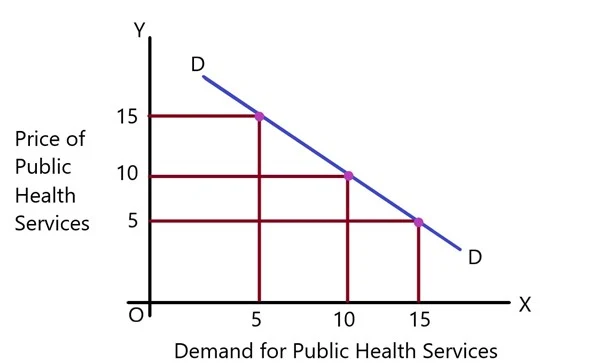Law of Demand in the Context of Public Health Economics
The law of demand is a fundamental principle in economics that states that all else being equal, as the price of a good or service decreases, the quantity demanded for that good or service increases, and conversely, as the price increases, the quantity demanded decreases. This law holds true for a wide range of products and services, including those in the field of public health.
In the context of public health economics, the law of demand can be applied to the demand for public health services and interventions. When the cost or price of accessing these services decreases, individuals and communities are more likely to seek out and utilize these services. This principle emphasizes the importance of making public health services affordable and accessible to a wider population.
For example, consider the demand for vaccinations. If the cost of vaccines is lowered or if they are provided for free, more individuals are likely to get vaccinated, leading to higher demand. Similarly, the law of demand can be observed in the context of preventive screenings, where reducing the costs associated with screenings can result in increased utilization and better population health outcomes.
Here’s a table illustrating the law of demand in the context of public health services, along with an explanation for each scenario:
| Price of Public Health Service | Quantity Demanded | Explanation |
| High | Low | When the price of the public health service is high, fewer people are willing to pay for it. This might result in limited access and utilization of the service. As the price increases, the quantity demanded decreases, following the law of demand. |
| Moderate | Moderate | As the price becomes more reasonable and moderate, a greater number of individuals find the service affordable. This leads to a balanced equilibrium between price and demand. |
| Low | High | When the price of the public health service is low or free, more people are incentivized to utilize it. This results in higher demand for the service, as it becomes accessible to a broader population. The law of demand is observed as the price decreases and the quantity demanded increases. |
The concept of law of demand in public health service is explained with the help of table and diagram as follows:
| Price of Public Health Service | Quantity Demanded |
| 5 | 15 |
| 10 | 10 |
| 15 | 5 |
The law of demand states that as the price of a good or service decreases, the quantity demanded increases, and vice versa. This principle can be applied to public health services, where the cost or price of accessing health interventions influences the demand for those services.
High Price, Low Quantity Demanded: When the price of a public health service is high, such as expensive vaccinations or screenings, fewer people may be willing or able to pay for it. As a result, the demand for the service is low. This situation is in line with the law of demand, as higher prices deter individuals from seeking the service.
Moderate Price, Moderate Quantity Demanded: When the price of a public health service is moderate and aligns with individuals’ affordability, a moderate quantity of people may demand the service. At this point, there is a balance between the price and the demand, reflecting a typical equilibrium scenario.
Low Price or Free, High Quantity Demanded: When the price of a public health service is low or if the service is provided for free, more individuals find it accessible and are likely to demand it. This leads to a higher quantity of people seeking the service, as the lower price encourages utilization. Here, the law of demand is evident as the decrease in price is associated with an increase in the quantity demanded.






Please leave your comments or ask your queries here. The comments shall be published only after the Admin approval.